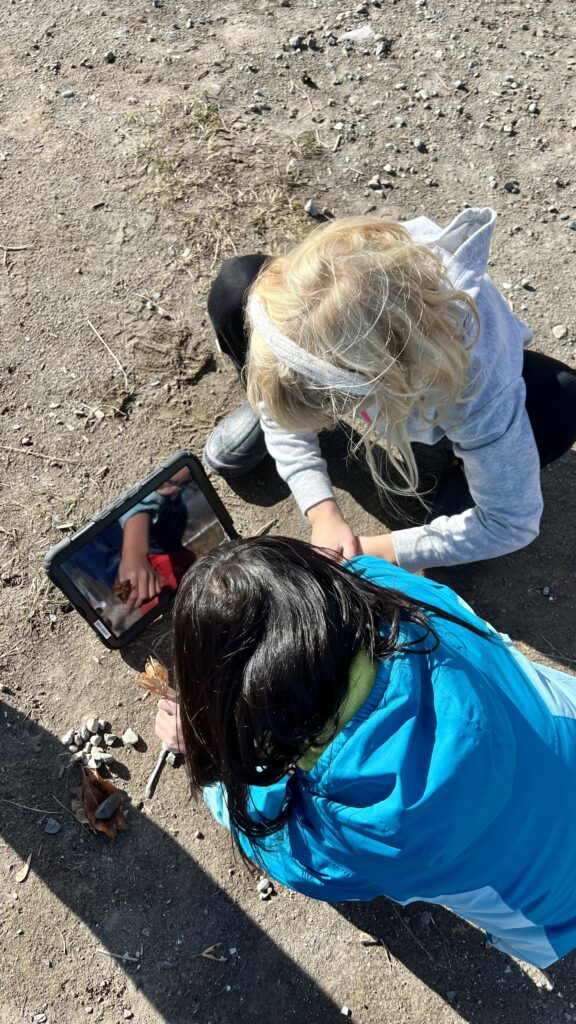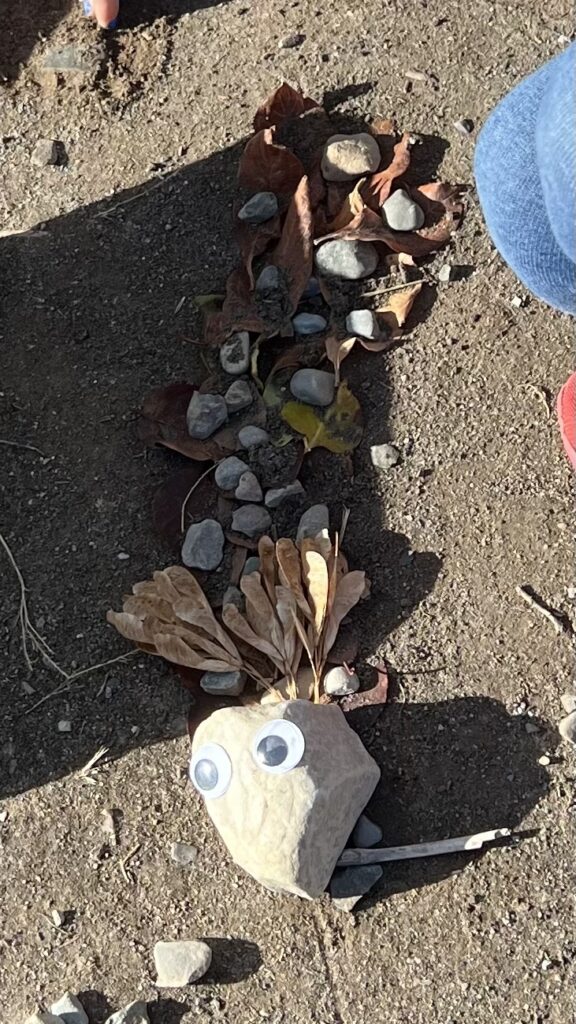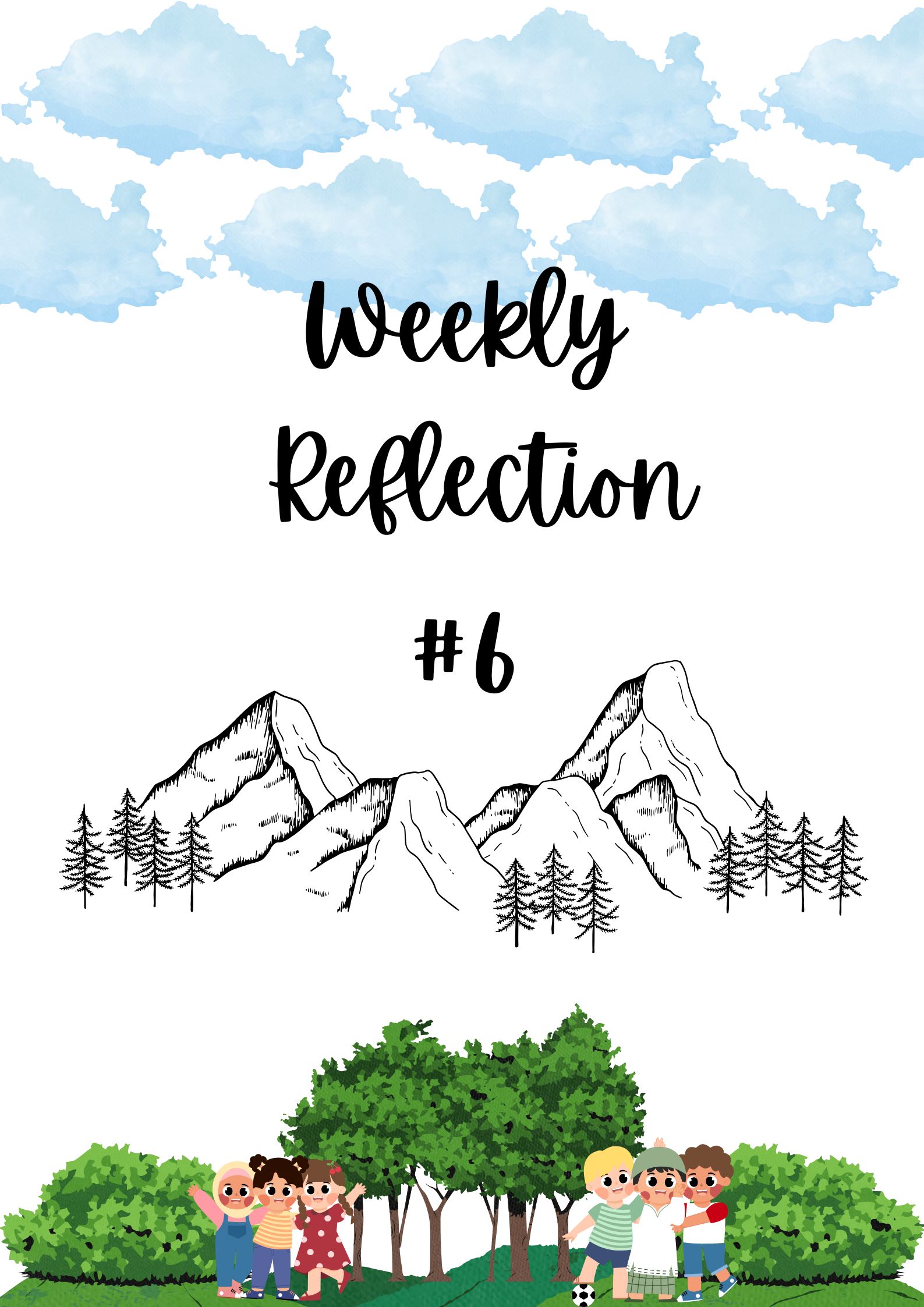This Weekly Reflection is on Take Me Outside Day!

Photo source: TakeMeOutside.ca
What is Take Me Outside Day?
Take Me Outside Day spreads awareness on outdoor learning by encouraging educators to bring their students outside! This initiative promotes the idea that learning can happen anywhere, and learning outside can have a ton of benefits, some of which include increased motivation, focus, and engagement.
How does this relate to our in-situ at Gordon Terrace Elementary?
During our last in-situ at Gordon Terrace, with ‘Take Me Outside Day’ in mind, we had the chance to bring students on a walk down to Elizabeth Lake to engage in an outdoor ‘Leaf Man’ lesson.

During our ‘Leaf Man’ project, we brought students in our group around to collect natural items such as leaves, sticks, and rocks. Then, we had the challenge of creating an animal art piece out of these items.
Our group made this snake out of natural materials (minus the googly eyes):

We thought this activity was great because it not only got kids outside exercising and breathing in fresh air, but also gave children the opportunity to be hands on with nature, sparking their creativity and imagination as they gathered leaves, rocks, and twigs to create their animals.
This activity encouraged teamwork, creativity, and collaboration, because as a group we had to come up with an animal to recreate, and then we had to work together to build and represent the animal with our materials. We found students to be very engaged and interested in this project, and their imaginations really came alive as they were making their creations. Our group even came up with a name and backstory for our animal!
What Resources Can Teachers Access that Support Outdoor Learning?
- The website Evergreen includes a variety of activities for teachers to get their students outside! Some ideas that were included in this resource include: how to get students outside during the winter, outdoor crafts that support birds, and outdoor mindfulness activities.
- This resource library by Outdoor Play Canada is meant to support teachers with outdoor learning and play. There is a variety of resources listed on this website that can be beneficial for teachers wanting to bring students outside.
“This resource library is intended to support you in your outdoor play efforts, whether that be for policy, practice, research, knowledge mobilization… or simply for the sake of play!”
Outdoor Play Canada
- The website Schoobio provides teachers with experiential and plant based learning methods, which can connect students with the natural world. This resource is aimed at middle and high school teachers, and includes a curriculum with 6 units that focuses on the general themes of sustainability, biodiversity, and ecology.
These resources have the potential to help teachers take students outside more often! This can lead to many benefits for both the teacher and the students.
Why Should We Take Students Outside?
Reflecting on an article I read by Dr Kumaree Padayichie, I have found many benefits for taking students outside.
- Outdoor learning supports holistic development. It supports children’s physical, emotional, social, and cognitive development by engaging them in a wide range of sensory experiences. As children explore natural elements, they develop critical skills like balance, coordination, and resilience while boosting emotional and social well-being.
- It can enhance physical health and cognitive skills. Active outdoor play benefits children’s health by keeping them physically active, which supports muscle development and cardiovascular health. Physical activity in natural settings is also linked to improved cognitive skills, as children engage in exploration and critical thinking.
- It encourages creativity and problem solving. When children are playing outdoors, they learn to navigate their surroundings, assess risks, and solve problems, which sparks confidence and adaptability.
- It can connect students with nature. By spending time outside, students develop a deeper understanding of and appreciation for nature, learning to care for and respect their environment.
Resource: Dr. Kumaree Padayichie
